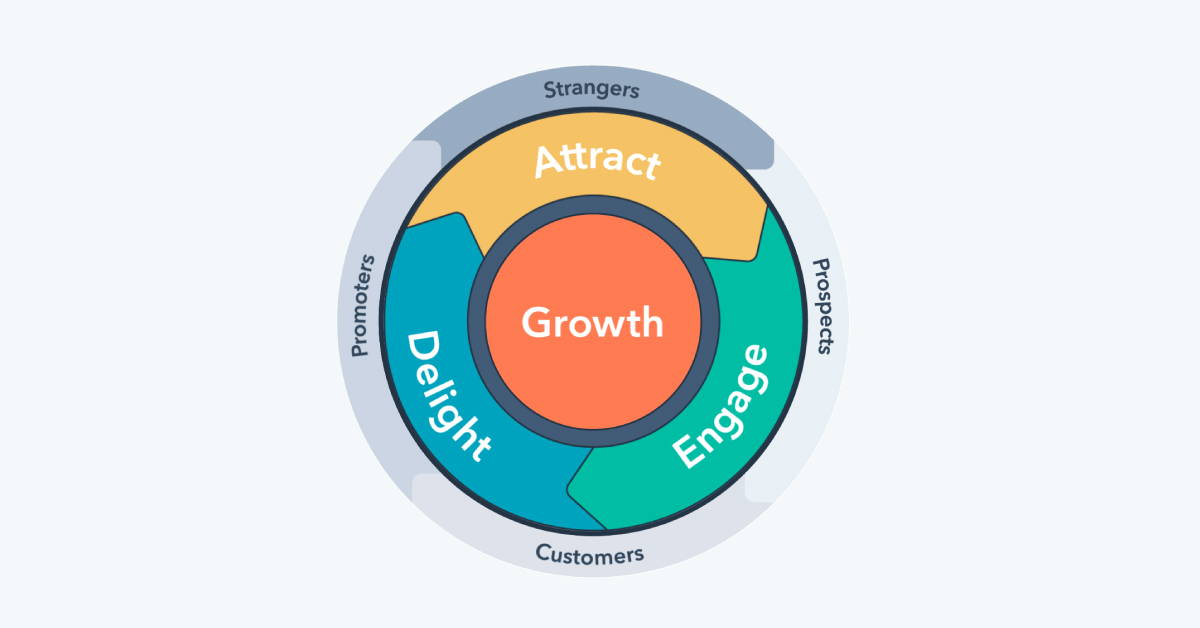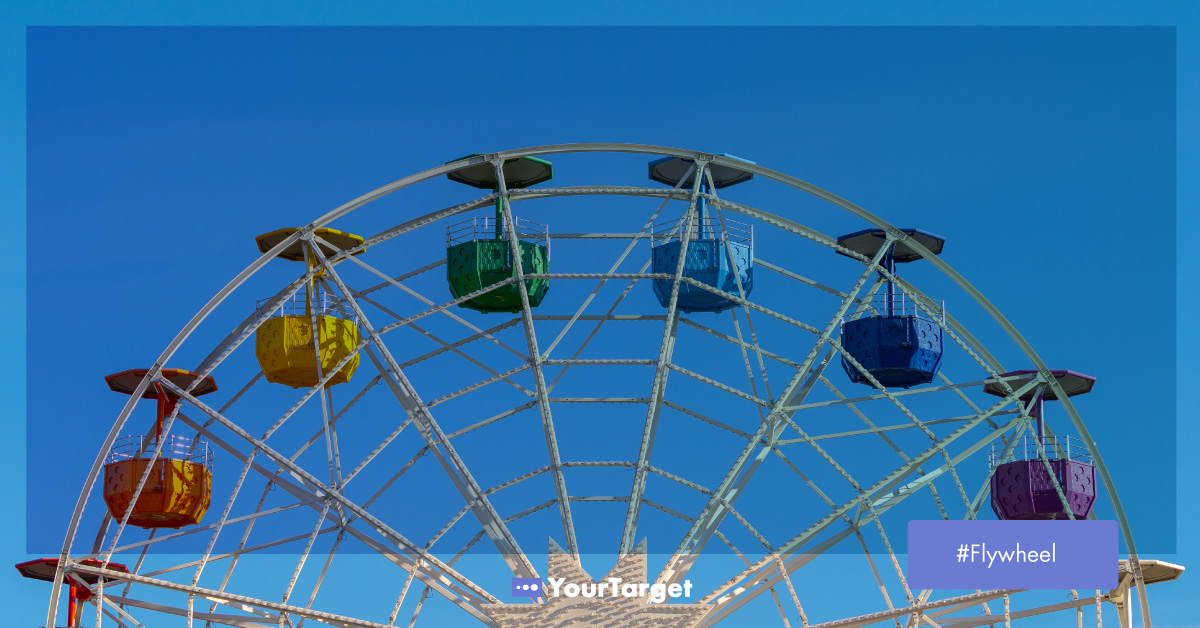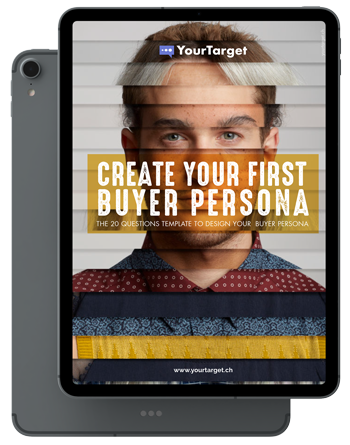In today’s hyper-competitive business landscape, customers expect to be more to a brand than a number on an end of year sales report.
Today, 76% of customers expect companies to understand their needs and feeling underappreciated is the main reason for switching brands. With this in mind, businesses need to consider whether their current marketing and sales strategy aligns with shifts in consumer behavior and digital trends.
If you’re acquainted with the marketing world then you’ve undoubtedly heard of the inbound marketing funnel. This model has been the go-to method for converting leads to customers for years. However, the linear, transaction-centric approach of the sales funnel has become less relevant over the years.
Marketers need a new model that reflects the needs of today’s digitally-empowered consumers. Enter the flywheel.
In this article, we’ll look at the key differences between the funnel and the flywheel to help you decide whether it’s time for your business to make the switch.
What is the inbound marketing funnel?
The inbound marketing funnel is a marketing model that illustrates the customer’s journey towards making a purchase. There are several stages involved as the funnel and they can be adapted to suit different business needs. Typically, there are four stages involved: awareness, interest, decision, and action.

The funnel shape reflects the fact that a large number of people might be interested in the “awareness” stage, but only a small number will filter down to becoming paying customers in the “decision” stage.
It’s a trusted methodology that has been used by marketing and sales teams for years. However, this kind of transaction-oriented approach has become outdated over the years as consumer habits have shifted.
A new take on the funnel: What is the Hubspot Flywheel?
Hubspot’s Flywheel is an inbound marketing model adapted by Hubspot. The Flywheel illustrates the momentum organizations gain when they deliver an exceptional customer experience.
In reality, a mechanical flywheel is an energy-efficient wheel that stores energy depending on how quickly it spins, how much friction it meets, and how big it is. We can think of this energy powering the wheel in the same way that customers are the ones who power your business and, ultimately, help it grow.
In a flywheel model, customers and business growth lie at the center of each process. Everything you do revolves around the customer experience and creating loyal customers whose energy fuels growth.
The Flywheel is similar to the inbound marketing funnel in that it depicts the same stages of the customer journey “attract”, “engage”, and “delight”. However, the outcome is completely different. Here’s a quick look at what each of those stages entails:
Attract
This is where your customer begins their journey. It focuses on attracting qualified visitors to your website, typically by sharing various types of content that addresses their pain points and answers their questions.
This inbound methodology is significantly more effective than outbound marketing tactics that focus on pushing a message towards an unqualified audience. Attracting visitors involves:
- Identifying your target audience by creating buyer personas.
- Developing a content strategy that addresses their needs, wants, and pain points.
- Regularly publishing relevant content on your website and sharing it on social media platforms.
Engage
In this stage, you’ll focus on connecting with visitors by engaging them with quality, personalized content and messaging as they edge closer to becoming qualified leads. Your focus should be on building trust and authority with leads and customers.
This stage really focuses on ensuring that visitors have the best experience possible. To do this you’ll need to stand out from competitors by offering your audience something unique and specific to their needs.
This might be more in-depth content (think: downloadable resources like white papers or checklists) that solidifies your business as their first choice, moving them swiftly through the consideration stage towards taking action. At this point, you can also engage directly with leads and existing customers via social media or targeted email marketing campaigns.
Delight
The customer journey doesn’t end with a transaction. Once a customer purchases your product or service, you’ll need to “delight” them with exceptional customer service and continue sharing valuable content that encourages them to continue engaging with your business.
At this point, it’s all about ensuring customer loyalty.
Loyal customers are more likely to become promoters of your brand, which means they’ll share their experience with others. In this way, the flywheel is self-sustaining and customer journeys cyclical.
How does it work?
The functionality of the flywheel depends on three things:
- How quickly you spin it.
- The amount of friction there is.
- Its size.
Confused? Let us explain.
How fast the flywheel spins increases with the amount of force applied. By force, we’re referring to strategies and tactics that a company implements to increase the speed of the flywheel. This includes things like:
- Inbound marketing.
- Paid advertising.
- Customer service strategies.
Basically, anything that improves the experience of your customers and increases the likelihood of them spreading a good word about your company to other potential customers.
So, the wheel is spinning, now you need to make sure there’s nothing slowing it down.
Ensure the wheel isn’t encountering any friction as it spins. Things like siloed internal processes, lack of team communication, or poor customer service can all cause friction and prevent your flywheel from spinning smoothly.
Reducing friction requires you to look at your overall business strategy to consider how things you’re doing might be putting strain on the customer experience.
When you increase the speed of the flywheel and remove the causes of any friction slowing it down, you’ll see that the energy (customers) continues to drive the wheel forward, fuelling business growth.

Funnel vs. Flywheel
Now you know what each model is, let’s see how they stack up against each other.
Both the funnel and the flywheel are aimed at generating sales. However, the approach they take to achieving this goal is very different.
Where the funnel is linear, the flywheel is cyclical.
Where the funnel thinks of customers as the outcome, the flywheel puts them right at the center.
The flywheel was developed in response to modern consumer habits that have undergone significant transformations within the last 10 years. Due to shifting technologies and an increasingly competitive business landscape, the way that consumers gather information, discover brands and products, and share their experiences has evolved.
Consumers are more empowered than ever before to access a never-ending pool of information, compare products and services, and make purchasing decisions. The proliferation of online reviews coupled with the growing mistrust of outbound sales and marketing tactics rendered the funnel approach impractical for modern businesses.
Key differences
1. Transaction-centric vs. customer-centric
In a funnel model, becoming a customer boils down to making a transaction. Customers are an output, and although many enter into the funnel, only a few come out.
In today’s digital world, customers don’t want to feel like a number to the brands they buy from. Consumers have higher expectations (and rightly so!) that require businesses to treat them like people, not dispensable transactions.
The flywheel reflects the needs of the modern consumer in that it puts the customer at the center of sales, marketing, and customer service operations. Consumers are no longer treated as a transaction, they’re the energy that drives business success.
When customers enter the flywheel, they continue to cycle through the engagement and delight stages, sharing their experiences with others. Nowadays, customers are a company’s most valuable marketers!
2. Linear vs. cyclical
In the digital world, consumers no longer have to enter the sales cycle in the awareness stage and trickle down until they make a purchase. Modern consumers are empowered with the digital tools and know-how to research companies themselves, meaning they no longer rely on salespeople and outbound marketing techniques to alert them to the existence of a product or service.
The linear structure of the inbound marketing funnel means that customers are treated as an afterthought. Emphasis is placed on nurturing leads through their customer journey towards a purchase decision. Once they make a transaction, they trickle out of the funnel and disappear.
The flywheel adopts a cyclical structure. Once the customer makes a purchase they remain in the cycle, becoming stored energy that continues to turn the wheel. Here, marketers recognize the importance of using their assets like inbound marketing, social media engagement, SEO strategies, and quality customer service to drive growth and retain loyal customers.
Ready to make the switch from funnel to flywheel?
If you want to ensure your sales and marketing strategies align with current consumer demands and expectations, it might be time to rethink the funnel. Although the funnel has yielded great results over the years, its linear approach doesn’t answer modern consumer demands.
By adopting the flywheel model, you’re ensuring that your customers don’t simply drop off the radar once they’ve made a purchase. Instead, they play an integral role in driving business results.
Whether you stick to the funnel or make the transition to the flywheel, the important thing is that you focus on delivering a holistic customer experience. First, you’ll need to understand exactly who your audience is. The more you know about your audience’s needs and pain points, the better you can personalize their customer journey, nurturing them towards and beyond conversion.
After having read the difference between the two strategies, which one will you use? In any case the better you know your audience, the more targeted your messages will be.
Download our free buyer persona template today!

